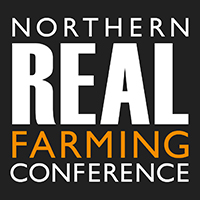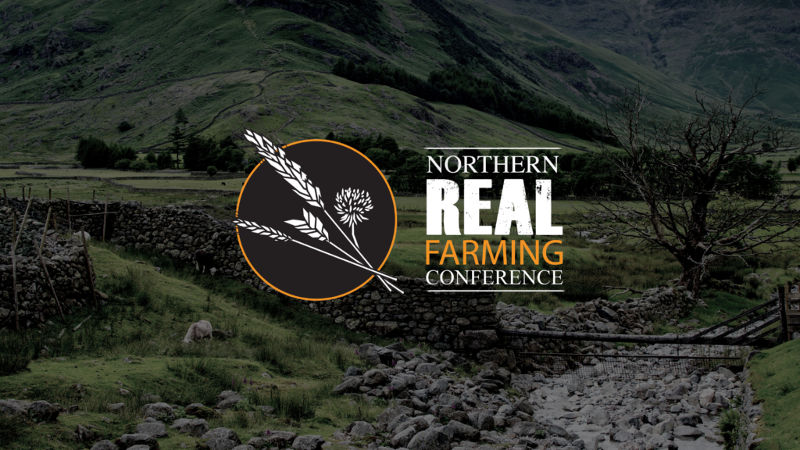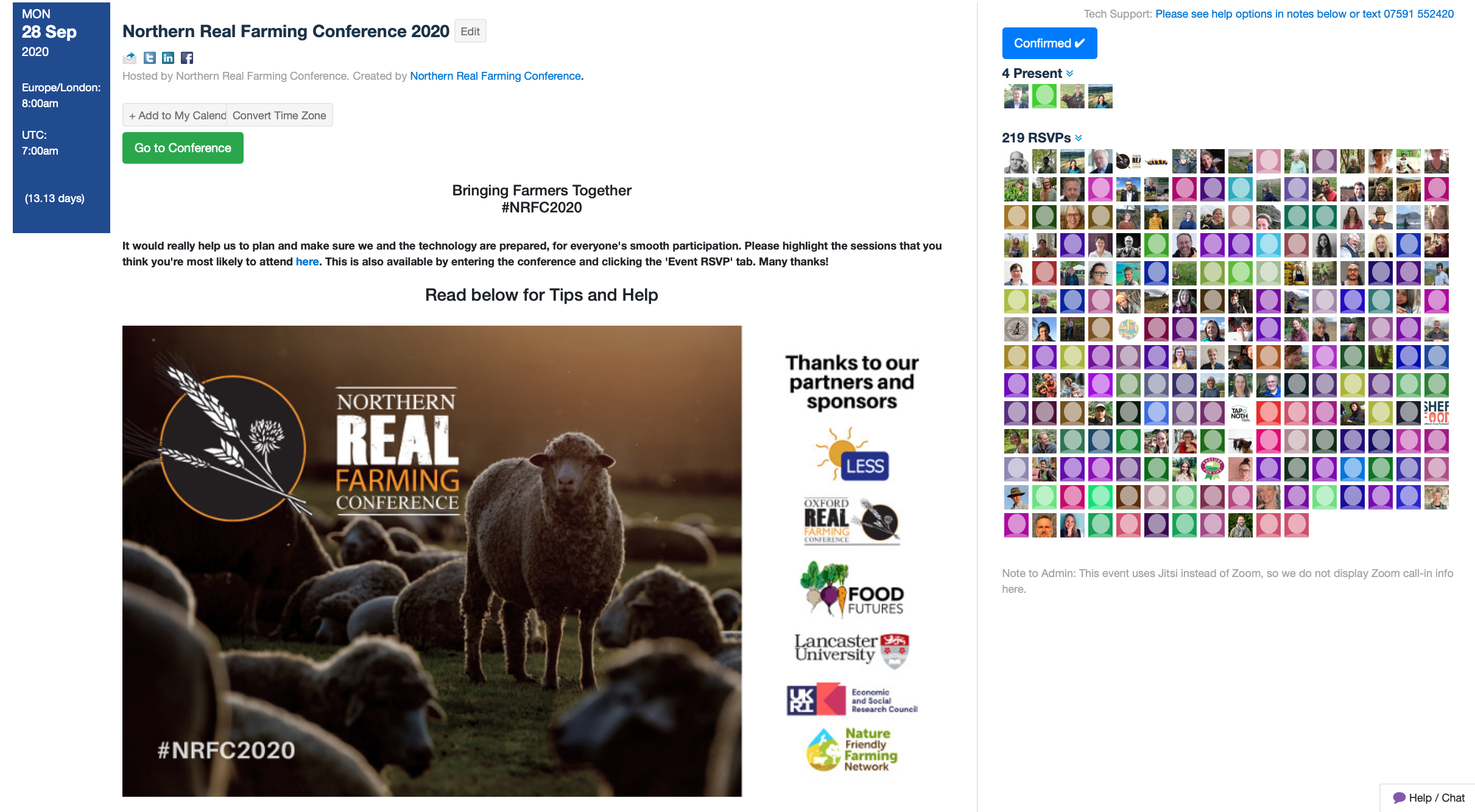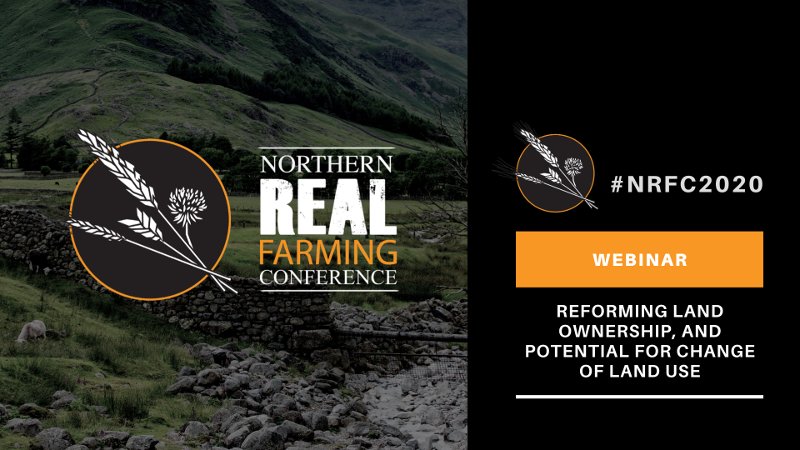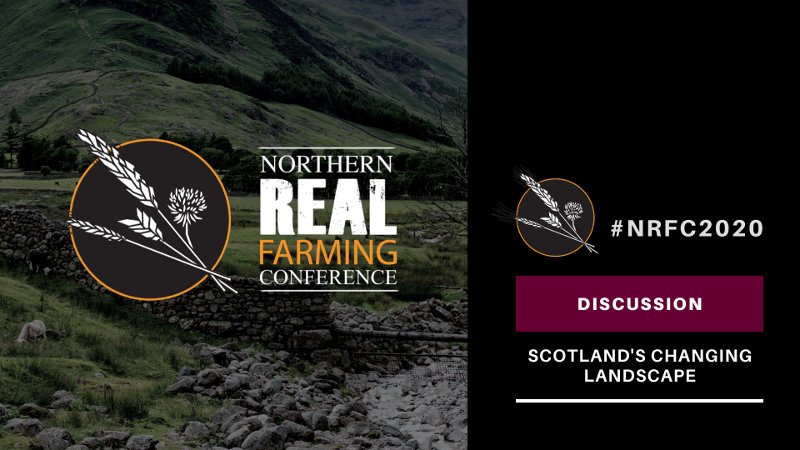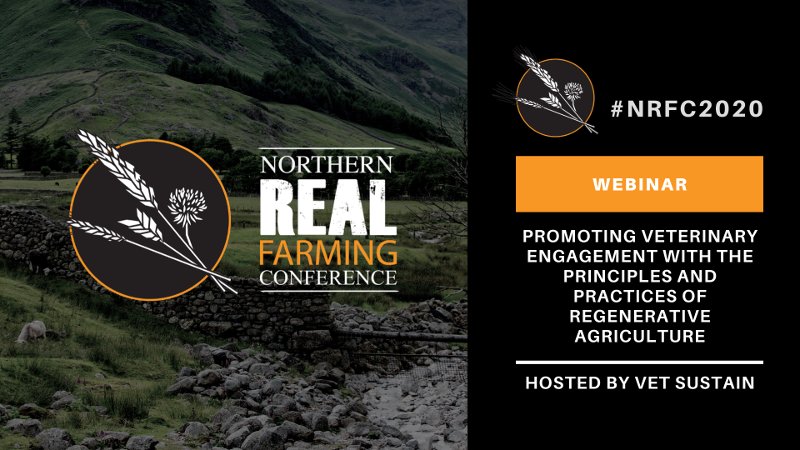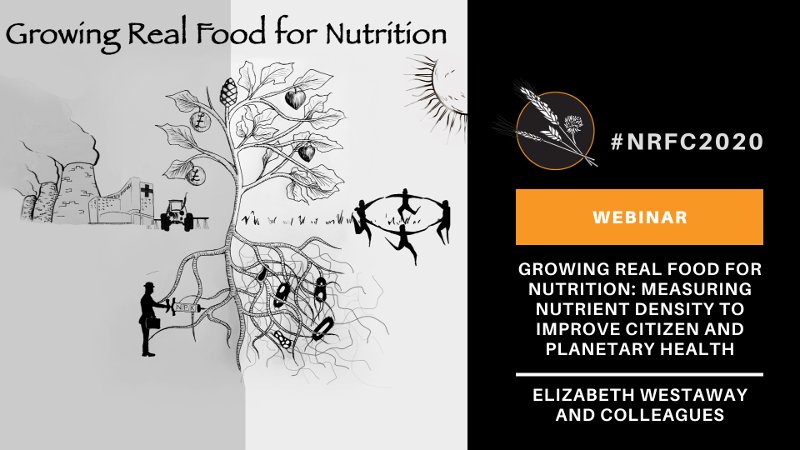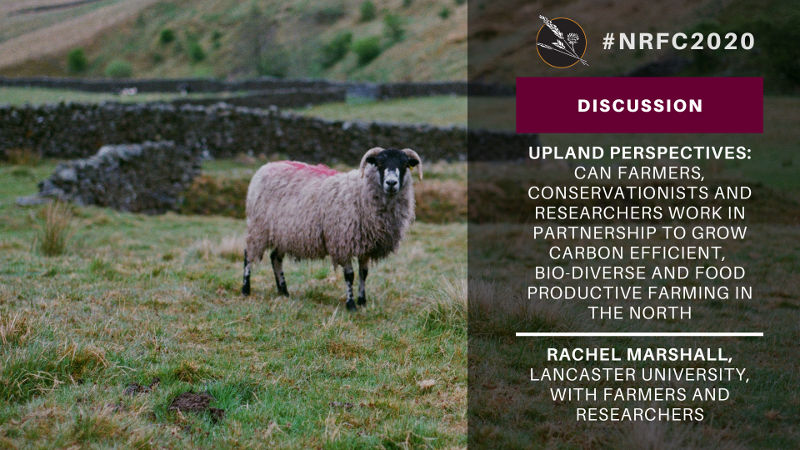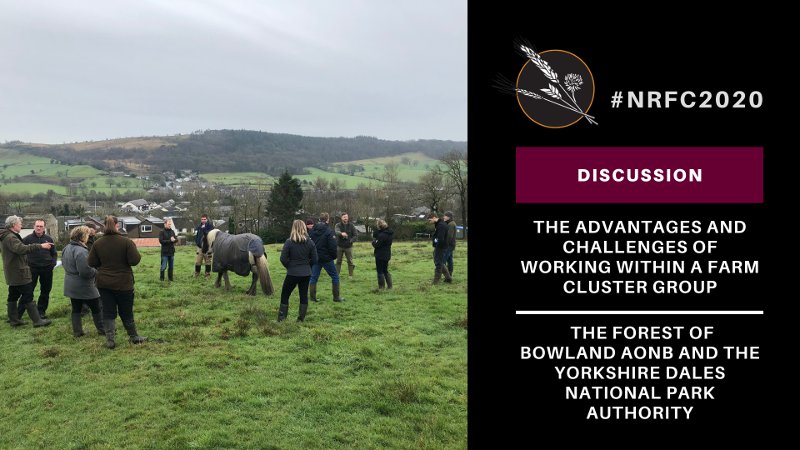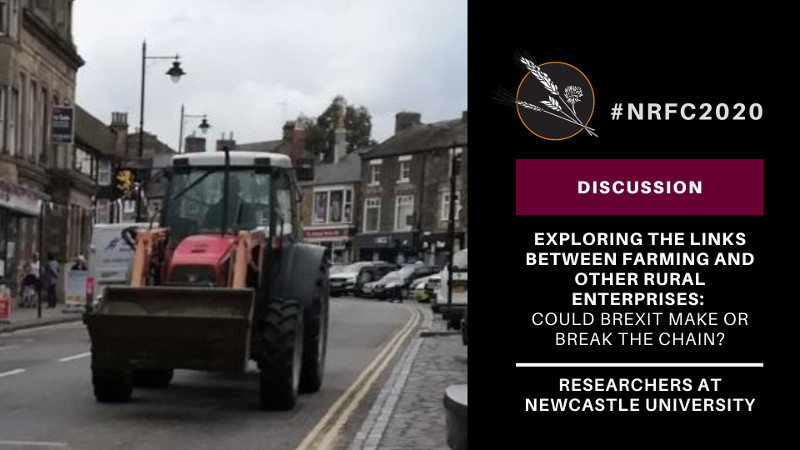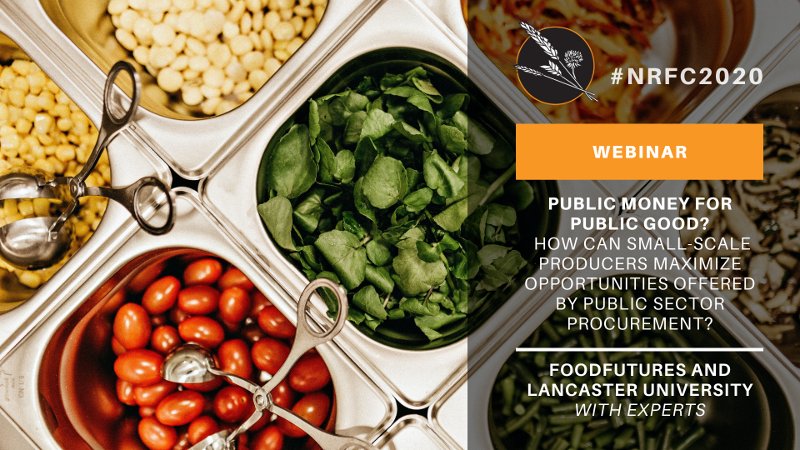Rod Everett shares his opening talk at the Northern Real Farming Conference this year. You can also listen watch the recording of the opening session here.
Northern farmers are very hard working, trying to do their best for their livestock and the land to leave for the next generation. It’s important to take a minute to remember special moments that you would like your grandchildren to experience.
We face huge challenges. If climate change leads to a 7.4 degree warming, we’ll have both warmer summers and 59% more rainfall by 2050. We will see more floods and fires around the world. 1
On my farm we’ve had six times more bank full floods since 2014. Some streams now dry up which never have before. Ten mature oak trees and some apple trees collapsed due to the very dry spring and wet late summer. The collapse of biodiversity and species loss on farm is significant and includes bull head, brown trout and eels lost from the River Roeburn. 2
What is behind this? NPK (Nitrogen (N) Phosphorus (P) and Potassium (K) chemicals and fertilizers are having a big impact, which leads to stream eutrophication, damage to micro organisms, and, latest research from Rothamstead suggests a loss of soil structure also due to NPK. 3 Nitrogen causes thin cell walls in plants which makes them more vulnerable to insect attack, which in turn leads to needing more chemicals. When consumed, nitrogen mixes in the mouth with proteins and converts to carcinogenic nitroso-amines. 4, 5
Agrochemicals are also to blame. The average UK potato is sprayed a huge 32 times. In an Austrian study of apple microbiomes it showed organic apples had a greater diversity of microbiome. Chemical treated apples had lower diversity and more potentially pathogenic chemicals.6
Pharmaceuticals are another issue. Synthetic pyrethroids are very damaging to water and they effect the soil microbiome. 25 There are natural alternatives. For example, dung beetles take parasitic worm eggs into soil and destroy them. Ivermectin, an anthelminthic and in the dung if given to animals is attractive to dung beetles but it damages their reproductive success destroying the natural processes. 7 There is work in Scotland looking at heather and a fungi as potential anthelminthics as an alternative! 8
Animal feed includes around 85% genetically modified content and uses half of all cereals grown. 9 JBS provides 30% of the UK pig and poultry feed which is largely sourced from Amazon and is destroying habitat. 10
Glyphosate, a key component of Round up is sprayed on the equivalent of 30% of UK agricultural land. 11 Glyphosate is N (nitrogen) attached to glycine (an essential amino acid). It is mistaken for glycine and gets incorporated into cells. Glycine helps make other amino acids that produce serotonin and dopamine. A lack of these disrupts the gut brain link. 12 For example we don’t know when we have eaten enough so it leads to obesity.
Glyphosate chelates minerals out and causes a sulphate deficiency. This leads to production of hydrogen sulphite gas in the gut that contributes to leaky gut. 13 EU glyphosate safety levels are around 0.1ppm for veg and they are considering reducing this to 0.01ppm. Yet cereals that are heavily sprayed are allowed 20ppm and they want to increase this to 30ppm. 14 WHO safety levels for animal feed is 400ppm. 15 What could possibly be safe about that? The Bayer lobbyist likely paid more than Boris Johnson. The NFU is pushing half truths about gylphosate and picking out a very small section of research results! 16 In the USA there are 125000 lawsuits over glyphosate damage including cancer. 17 Glyphosate is linked to many modern diseases- such as attention deficit disorder, obesity, autism, dysbiosis. 18
The damaged human biome from glyphosate and other agrochemicals is passed on through the generations. 30% of our gut biome is inherited from our mother in the 1st year of life. 19 If people are eating trash food during pregnancy the effects are inherited! To get a healthy biome we need healthy soil with is full of compliment of bacteria, fungi, viruses, protozoa, nematodes, earthworms etc. These work together to help protect from disease.20
We have a choice – to destroy and abolish life on earth or to nurture life on earth. The permaculture ethics are Care for the earth, Care for people, and fair shares. 21
In UK 75 million Ha treated with pesticides, 36 million Ha treated with fungicides, and 5 million Ha treated with insecticides. 22 Is this the legacy we want to leave our children?
For me, the NRFC is an important opportunity to learn how to build healthy soil. I am interested in things like mob grazing, biofertilizers (made from fresh cow manure) and compost teas. How can we build the fungal structure in the soil to get a good crumb structure aiming for up to 78% air in soil? 23 This helps with flood management, plant and animal health. We must look after nature and the soil biome.
I am part of Food Futures for North Lancashire. I came across Lancaster Farm Fresh Cooperative and got excited because there are 100 organic farms feeding into a CSA, hospitals, local government and school. 24 Unfortunately it is in Pennsylvania! But hopefully this model is coming to Lancaster UK soon.
I hope you enjoyed the conference and made the most of farmer to farmer links, as well as farmer to vets, national parks and agencies and help to develop a future with a future.
We can do it! This conference was a thought a year ago, now it has taken place with an amazing line up of speakers and many hundreds of participants.
1. National Flood and Coastal Erosion Risk Management Strategy for England 2020
2. Riverroeburn.uk
3 https://www.rothamsted.ac.uk/news/where-there’s-muck-there’s-brass
4 The truth about the nitrates in your food BBC Angela Dowden 13th March 2019 +University of Nebraska–Lincoln Extension, Institute of Agriculture and Natural ResourcesG1784(Revised December 2013)Drinking Water: Nitrate-Nitrogen Sharon O. Skipton
6 An Apple a Day: Which Bacteria Do We Eat With Organic and Conventional Apples?
https://www.frontiersin.org/articles/10.3389/fmicb.2019.01629/full
7 Ivermectin residues disrupt dung beetle diversity, soil properties and ecosystem functioning: An interdisciplinary field study J.R.Verdu et al Science of The Total Environment
Volume 618, 15 March 2018, Pages 219-228
8 Webinar from Soil Association Scotland and SRUC on using heather and a fungi Duddingtonia flagrans as anthelminthic by Spiridoula Athanasiadou a RELACs project
9 European Feed Manufacturers’ Association
10 Dr Alice Brough Vet speech outside DEFRA offices.
11 Pesticide usage statistics – Glyphosate https://secure.fera.defra.gov.uk/pusstats/myresults.cfm
12 Glyphosate pathways to modern diseases V: Amino acid analogue of glycine in diverse proteins Journal of Biological Physics and Chemistry Volume 16(June):9-46 Anthony Samsel and Stephanie Seneff
13 Talk by Stephanie Seneff
14 Review of the existing maximum residue levels for glyphosate according to Article 12 of Regulation (EC) No 396/2005 – revised version to take into account omitted data European Food Safety Authority (EFSA) https://efsa.onlinelibrary.wiley.com/doi/epdf/10.2903/j.efsa.2019.5862
15 Glyphosate pesticide detail Codexalimentarius FAO-WHO
16 How glyphosate works for us all NFU
17 The Legal Battle Against Roundup and Other Biocides Arty Mangan – Bioneers article.
18 Various talks by Dr Zach Bush
19 Human Genetics Shape the Gut Microbiome
Julia K. Goodrich et al 2014 http://dx.doi.org/10.1016/j.cell.2014.09.053
The Role of Gut Microbiota Biomodulators on Mucosal Immunity and Intestinal Inflammation
Chiara Amoroso at al Cells May 2020
20 Gut Microbiome and Its Impact on Health and Diseases A. Muthaiyan 2020
21 Permaculture ethics permaculture.org.uk
22 Expert Committee on Pesticide Residues in Food
Apples Pesticide Residues Monitoring Report 2015 + PAN – Pesticide database (pesticideinfo.org)
22 The truth about pesticide use in the UK https://www.pan-uk.org/pesticides-agriculture-uk/
23 For the Love of the Soil. Nicole Masters 2019
24 Lancaster Farm Fresh Food Cooperative https://lancasterfarmfresh.com
25 ANTIPARASITICS AND THEIR IMPACT ON SOIL AND DUNG FAUNA
Jean-Pierre Lumaret et al International UBA Workshop “Pharmaceuticals in Soil, Sludge and Slurry” Dessau, 18-19 June 2013
